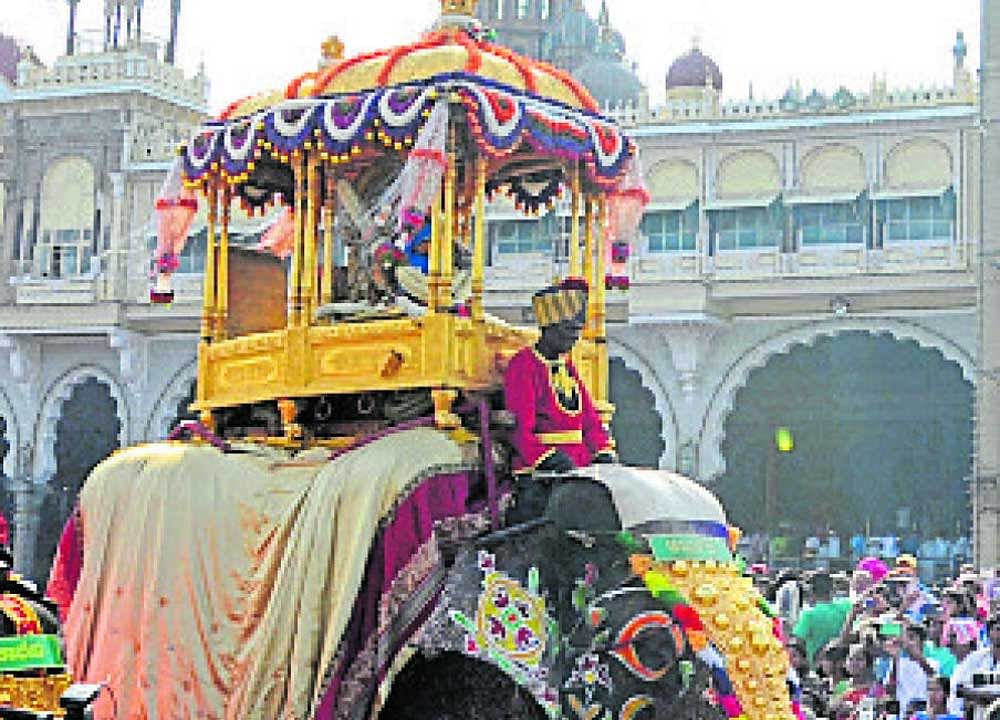
The Wadiyars want to return to a pre-1970 tradition of a herd of elephants pulling the golden howdah during Dasara.
The 750 kg howdah (golden throne) is now mounted on the back of a tusker and paraded on the streets of Mysuru.
Navaratri and Dasara celebrations begin here on September 21, in less than a week from now. Scion Yaduveer Krishnadatta Wadiyar and his wife Trishika, besides others in the erstwhile royal family, are concerned about the stress the elephant goes through as it trundles 5 km for the annual ‘jambu savari’. The royal family recently met elephant experts, including those from the IISc, for their opinion on whether the howdah could be mounted on a chariot and drawn by a herd, as was done prior to 1970.
What experts said
“We explained to the family that a group of elephants drawing a chariot would be better than just one carrying the howdah. The animals will be less tense, and the fear of the animal losing its temper will also ease,” an IISc source told .
Sources from the royal family said the Mysuru Dasara organising committee had to take a decision. But with less than a week to go, a quick decision is called for as the elephants will have to be trained accordingly, they said. D Randeep, Mysuru deputy commissioner, said the family had not officially communicated anything to the government. “The forest department has not finalised which elephant will carry the howdah either,” he said.
An earlier scion of the erstwhile royal family, Srikantadatta Narasimharaja Wadiyar, had consulted experts and reduced the tusker’s waiting time during the procession.
“We had explained the tusker is less stressed when he is moving than when he is waiting after the procession. The discussion on the howdah being drawn by chariot is good,” said Suparna Ganguly, elephant expert.
History of the royal procession
The maharaja riding atop an elephant on a golden throne is a hoary tradition in Mysuru.
Jayachamarajendra Wadiyar, the last maharaja of Mysore, sat on the golden throne for the 1969 elephant procession. In 1970, he placed a sword on the throne and drove along in his car.
Indira Gandhi, then prime minister, had just announced she had stripped the princes of all their privileges. That was to be the last royal procession in Mysuru.
The decision didn’t go down too well with tradition-loving Mysureans, according to historian P V Nanjaraj Urs.
In 1971, Kannada activist Nijalinga Swamy got a wooden howdah carved, borrowed an elephant from the Mysuru zoo, and mounted a picture of Bharat Mata on it for a small procession near Padma talkies. The government adopted the idea in 1972, and made the jumbo procession a state affair.
No scion of the royal family was allowed to ride atop the elephant; an idol of goddess Chamundeshwari was placed there instead.
Since 1975-76, the royal family gives the howdah for use during the procession, Urs said.
Pictures in Jaganmohan and Amba Vilas palaces show kings such as Immadi Chikka Krishnaraja Wadiyar (1728-1766) seated on elephant-drawn chariots, he explained.